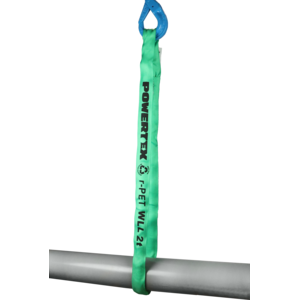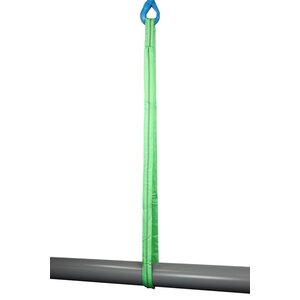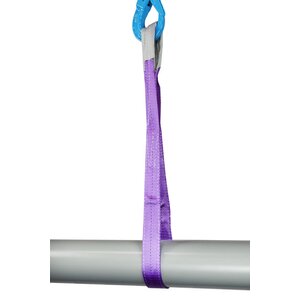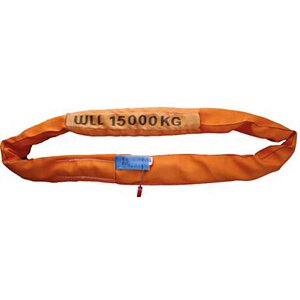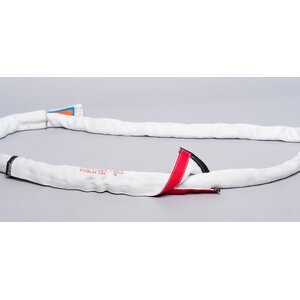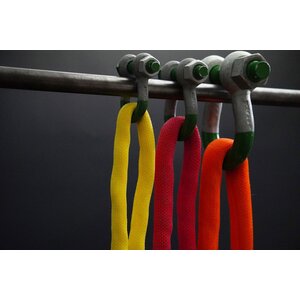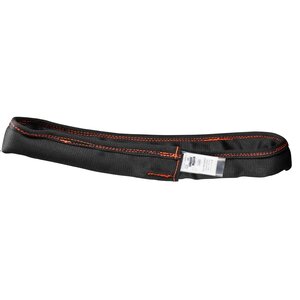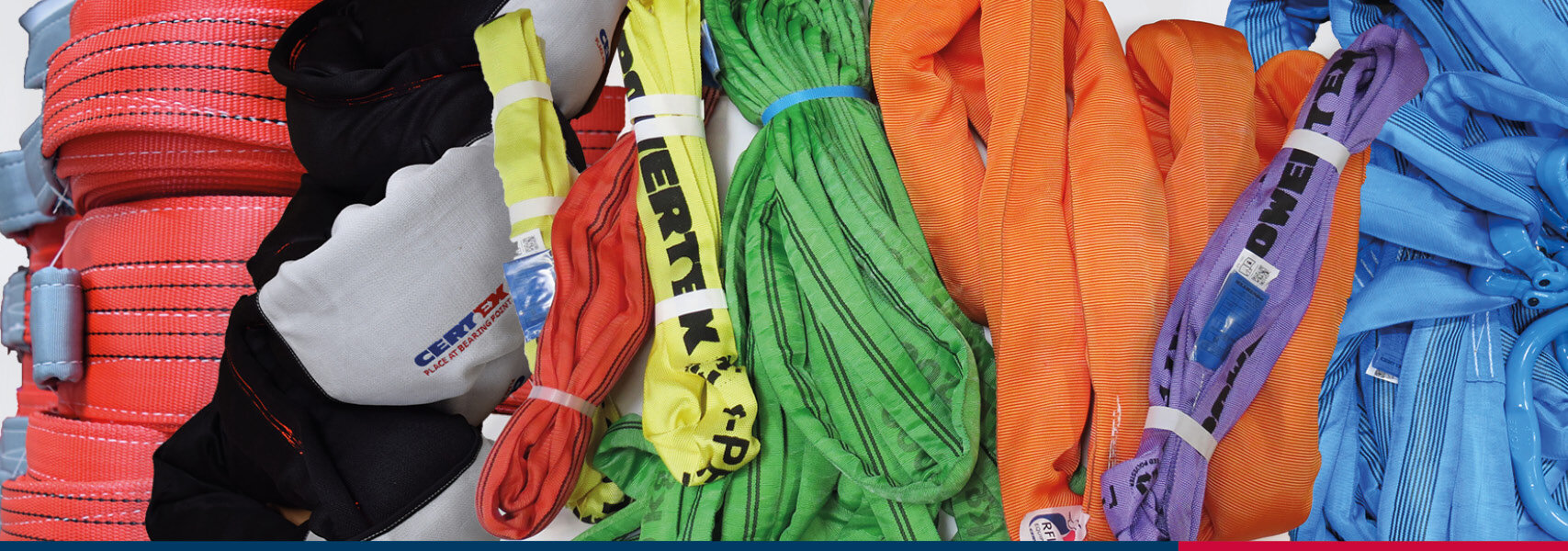
There are different types of synthetic lifting slings
Synthetic lifting slings are a versatile and reliable choice for various lifting applications. Understanding the difference between the types of synthetic lifting slings is crucial in optimizing your lifting operations. In this article, you will get an overview of the different types of lifting slings, so that you can easily choose the most suitable lifting sling for your job.
Understanding the nuances and strengths of each type of sling allows lifting and rigging professionals to select the most suitable solution for their specific applications. Whether for heavy lifting, precision positioning, or adapting to different environments, the versatility and reliability of synthetic lifting slings make them an indispensable asset in the lifting and rigging tool kit. Prioritizing the right choice of synthetic lifting slings ensures efficient lifting and increases safety and durability during operation.
Polyester roundslings
These slings are probably the most used lifting slings. They are available in many capacities and lengths, and they are known for their low stretch and excellent resistance to moisture and chemicals. Our POWERTEX polyester round slings are color-coded up to WLL 10 tons, for easy recognition.
Low stretch: Polyester slings have minimal stretch, which ensures stability during lifting.
Resilience: These round slings can withstand harsh environmental conditions, including exposure to moisture and chemicals, except alkaline-based chemicals.
Precision lifting: This type of lifting sling is preferred when precise positioning is required, due to the sling's low stretch.
Webbing slings
Our webbing slings are made from woven synthetic fibers, and they are known for their flexibility and ease of use. Our POWERTEX webbing slings are color-coded up to WLL 6 tons, for easy recognition.
Flexibility: Webbing slings easily adapt to the shape of the load and offer a safe and balanced lift.
Gentle on the load: The soft texture of the webbing slings prevents damage to delicate surfaces.
Wide load distribution: Webbing slings distribute the load evenly, reducing the impact on load points.
Polypropylene slings
Polypropylene slings are lightweight and suitable for various light to medium lifting tasks.
Lightweight: These slings are ideal for situations where reducing the weight of the rigging setup is important.
Water resistant: Polypropylene slings are water resistant. This makes them suitable for use in marine and wet environments.
Cost-effective: Polypropylene slings are often the most cost-effective solution for lifting slings.
Resistance: Unaffected by most acids or alkalis, but they are attacked by organic solvents
Aramid slings
Aramid is a strong and heat-resistant synthetic fiber material that also goes by names such as kevlar, twaron or nomex.
High load capacity: Aramid lifting slings retain strength, even under extremely high temperatures. They have high strength-to-weight ratios.
Excellent resistance: Aramid lifting slings withstand sparks, exceptional cut resistance and abrasion resistance.
Cost-effective: The heat-resistant jacket can be repaired.
Lightweight: Slings with aramid are soft, light and easy to handle.
Nylon slings
Nylon slings are commonly used across industries due to their versatility and strength.
High load capacity: Nylon slings exhibit impressive load capacity while maintaining flexibility.
Excellent resistance: Nylon slings resist alkaline-based chemicals, ensuring durability.
Ideal for heavy loads: Their ability to absorb shocks makes them suitable for heavy lifting.
High-performance fibers (HMPE)
High-performance synthetic fibers such as Dyneema® offer exceptional strength and durability. (HMPE stands for High Modulus PolyEthylene). Lifting slings in this quality offer:
Extreme strength: HMPE fibers have incredible strength-to-weight ratios, which makes them suitable for lifting heavy loads.
Minimal stretch: Slings in HMPE exhibit minimal elongation, ensuring stability during lifting.
 Do you have any questions?
Do you have any questions?
If you have any questions, please send us a message and we will be happy to help.
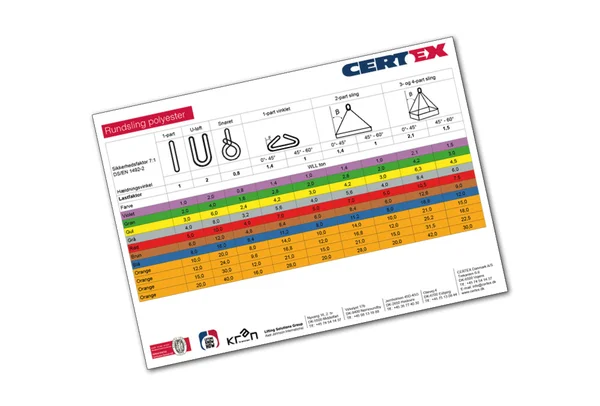
Load table round slings
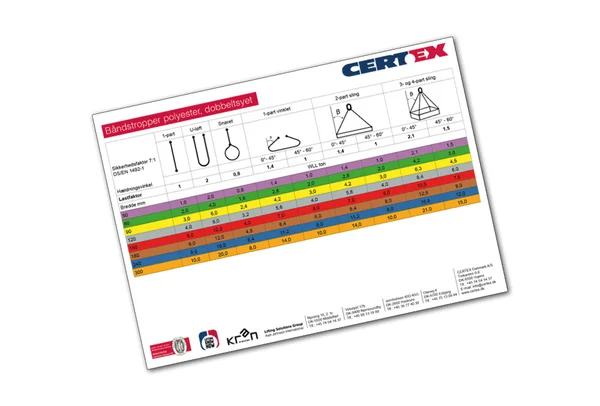
Load table webbing slings
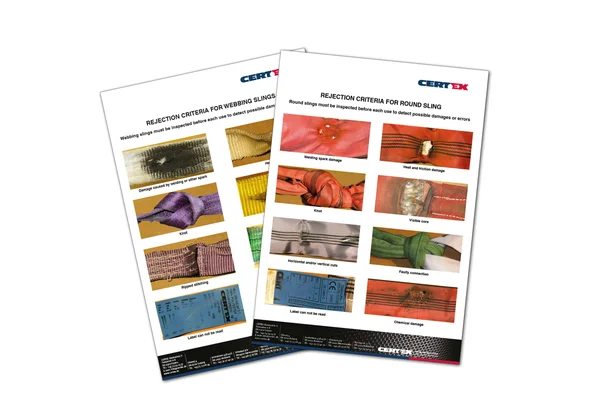
Rejection criteria for textile slings
Good to know - about textile slings
If you want to know more about using textile lifting slings, you will find useful information in this article.
Color coding of polyester slings
Learn why polyester slings have different colors, and what their colors indicate.
You can wash you synthetic slings
You can easily wash your synthetic slings, see how here.

